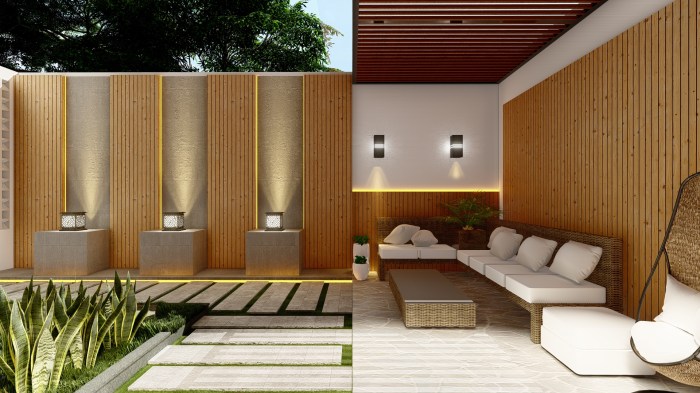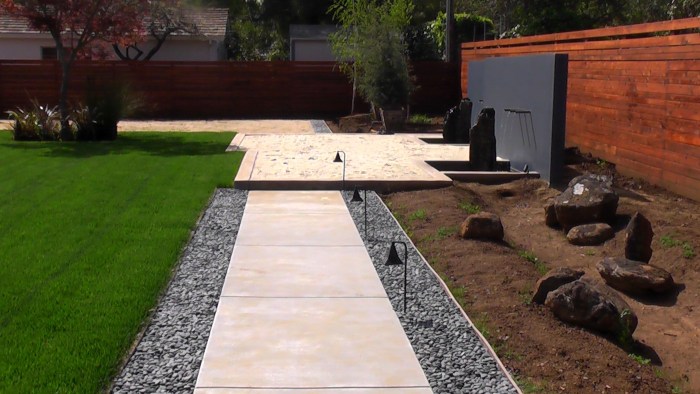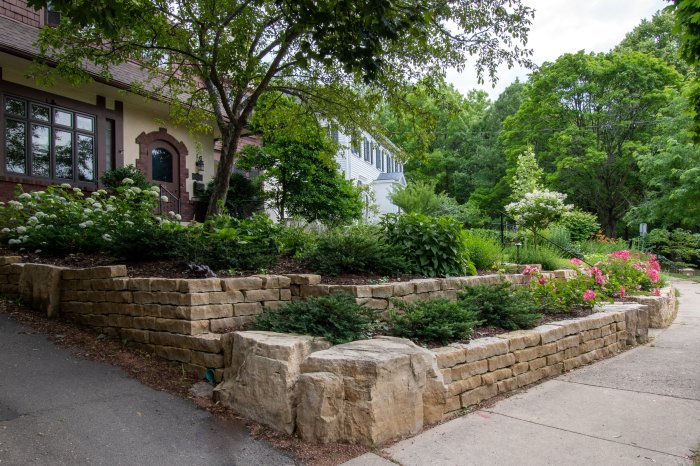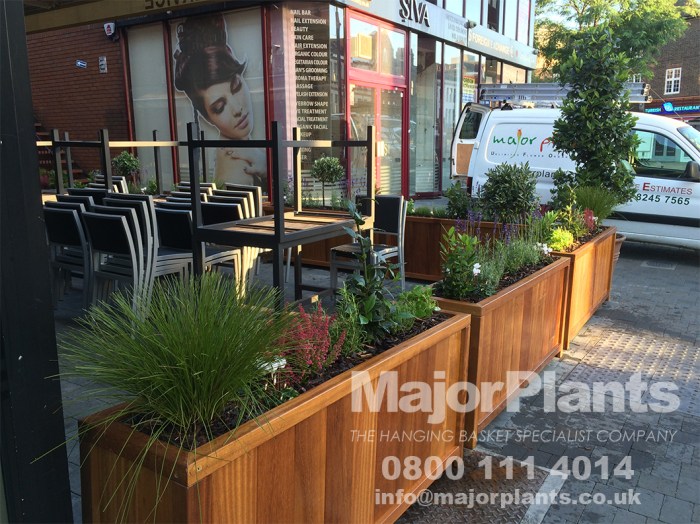Exterior Hardscape Design and Installation
Exterior hardscape transforms outdoor spaces. Think of it as the bones of your landscape – the strong, lasting elements that define the look and function of your yard, patio, or even commercial property. From sleek, modern patios to rustic, charming walkways, hardscaping offers a blend of practicality and aesthetic appeal. This guide will walk you through the key aspects of planning, designing, and maintaining beautiful and durable exterior hardscapes.
We’ll explore the diverse materials available, including concrete, brick, stone, and pavers, examining their unique properties and suitability for various projects. We’ll also delve into common hardscape features like patios, walkways, and retaining walls, discussing design considerations and installation techniques. Finally, we’ll touch on sustainable practices to help you create an outdoor space that’s both stunning and environmentally conscious.
Defining Exterior Hardscape
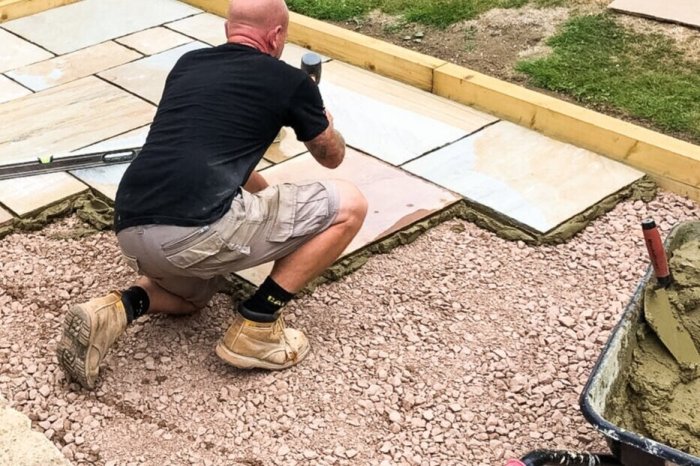
Source: Squarespace-cdn.com
Exterior hardscape refers to the non-living, permanent elements of a landscape design. Unlike landscaping, which focuses on living elements like plants and trees, hardscape encompasses the durable, man-made features that shape and define outdoor spaces. These elements contribute significantly to both the functionality and aesthetic appeal of residential and commercial properties.
Exterior hardscape plays a crucial role in creating usable and attractive outdoor areas. It provides structure, defines boundaries, and offers practical solutions for various needs, from pathways and patios to retaining walls and driveways. The aesthetic impact is equally important, as hardscape elements can enhance the overall design, creating focal points and visual interest within the landscape.
Components of Exterior Hardscape
Exterior hardscape encompasses a wide range of materials and structures. These components work together to create functional and visually appealing outdoor spaces. Key elements include: pavers (brick, stone, concrete), pathways, patios, driveways, retaining walls, decks, steps, fences, walls, and other similar structures. These are often constructed from materials such as concrete, stone, brick, wood, and metal. The selection of materials depends on factors like budget, aesthetic preferences, and the specific needs of the space.
Hardscape vs. Landscaping
The primary difference between hardscape and landscaping lies in the living versus non-living nature of the elements. Landscaping incorporates living elements such as plants, trees, shrubs, and flowers, focusing on organic growth and natural beauty. Hardscape, conversely, uses non-living, man-made materials to create structural and functional elements within the landscape. While distinct, both are integral parts of a complete and successful outdoor design; they complement each other to create a balanced and aesthetically pleasing environment. For instance, a beautifully designed patio (hardscape) can be enhanced by the addition of strategically placed flowerbeds (landscaping).
Functional and Aesthetic Roles of Exterior Hardscape
In residential settings, hardscape provides practical solutions such as driveways for vehicle access, patios for outdoor entertaining, and walkways for safe and convenient navigation. Aesthetically, it enhances curb appeal, creating a welcoming and visually engaging exterior. A well-designed hardscape can increase the property value and improve the overall living experience.
In commercial settings, hardscape plays a vital role in creating functional and attractive spaces for customers and employees. For example, parking lots, walkways, and outdoor seating areas are essential for businesses. Aesthetically, hardscape contributes to the overall branding and image of a commercial property, creating a positive and memorable impression. A well-maintained and thoughtfully designed hardscape can significantly enhance the appeal and functionality of a commercial property.
Types of Exterior Hardscape Materials
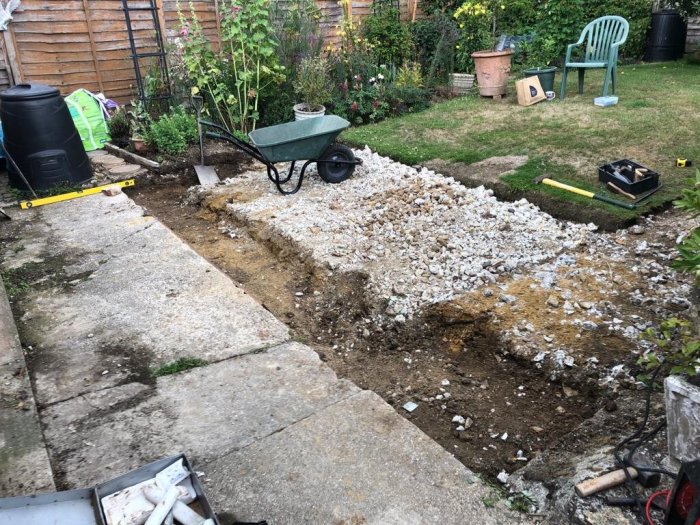
Source: Squarespace-cdn.com
Choosing the right materials for your hardscape is crucial for both aesthetics and longevity. The durability, cost, maintenance requirements, and overall look of your driveway, patio, or walkway will depend heavily on your material selection. Let’s explore some popular options.
Hardscape Material Comparison
Here’s a table comparing common hardscape materials to help you make an informed decision:
| Material | Durability | Cost | Maintenance | Aesthetic Appeal |
|---|---|---|---|---|
| Concrete | High; resistant to cracking with proper reinforcement | Moderate to Low; varies greatly depending on type and finish | Low; occasional cleaning and sealing | Versatile; can be stamped, stained, or textured for various looks |
| Brick | High; durable and long-lasting | Moderate to High; varies depending on type and quality | Low to Moderate; occasional cleaning and weed removal | Classic and timeless; offers a wide range of colors and patterns |
| Natural Stone (e.g., flagstone, slate) | High; naturally strong and weather-resistant | High; varies greatly depending on the type of stone and sourcing | Low to Moderate; occasional cleaning and sealing | Unique and elegant; offers a natural, rustic look |
| Pavers (concrete, brick, stone) | High; individual units can be easily replaced if damaged | Moderate to High; varies greatly depending on material and size | Low to Moderate; occasional cleaning and re-sanding | Versatile; offers a wide range of colors, patterns, and shapes |
Hardscape Design Examples
Different materials lend themselves to different hardscape features. For instance, a sleek, modern patio might utilize large, polished concrete slabs, while a rustic walkway could incorporate irregularly shaped flagstones. A formal driveway might be paved with uniform brick pavers, offering a structured and elegant appearance. The use of contrasting materials can also create visual interest. Imagine a patio made of light-colored pavers bordered by dark-colored stone.
Concrete Properties
Concrete is a versatile and durable material. Its strength and longevity make it ideal for driveways, patios, and walkways. However, it can be susceptible to cracking if not properly reinforced, and staining can be a concern. The cost-effectiveness of concrete is a major advantage, especially for larger projects. Various finishes, like stamped concrete mimicking other materials, significantly expand its aesthetic appeal.
Brick Properties
Brick offers a classic and timeless aesthetic. Its durability and resistance to weathering make it a popular choice for driveways and walkways. Individual bricks can be replaced if damaged, making repairs relatively easy. The cost of brick can be higher than concrete, but its longevity often justifies the investment. Regular cleaning helps maintain its appearance.
Natural Stone Properties
Natural stone, such as flagstone or slate, brings a unique and elegant look to any hardscape. Its natural variations in color and texture add character and visual interest. However, the cost can be significantly higher than concrete or brick, and the irregular shapes can make installation more complex. Regular sealing is recommended to protect against staining and weathering.
Paver Properties, Exterior hardscape
Pavers offer a combination of durability, versatility, and ease of installation. They are available in a wide range of materials (concrete, brick, stone), colors, and shapes, allowing for great design flexibility. Damaged pavers can be easily replaced, simplifying repairs. The cost varies depending on the material, but pavers generally provide a good balance between cost and quality. Regular re-sanding between pavers is important to maintain stability and prevent weed growth.
Common Exterior Hardscape Features
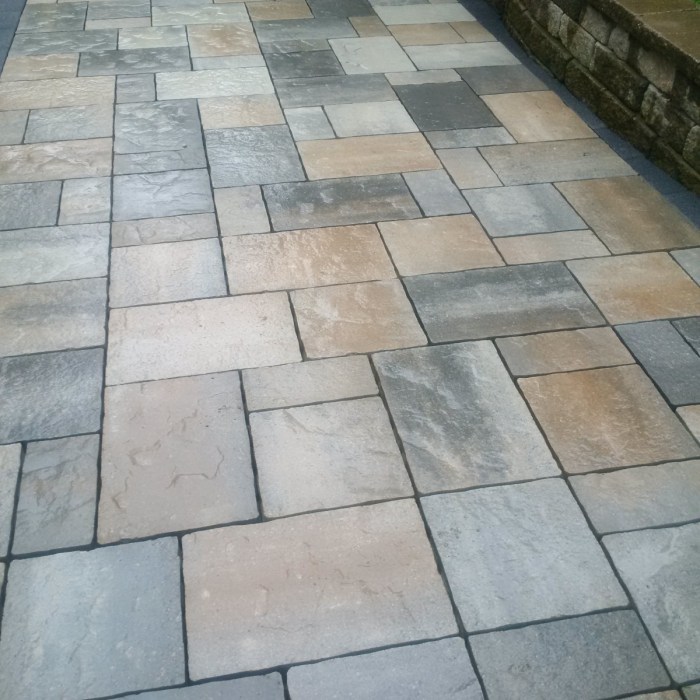
Source: cloudinary.com
Exterior hardscape features significantly impact a property’s functionality, aesthetics, and value. Choosing the right features depends on your lifestyle, climate, budget, and the specific characteristics of your land. Let’s explore some of the most common options.
Patios
Patios provide dedicated outdoor living spaces. Design options range from simple, rectangular concrete slabs to elaborate, multi-level designs incorporating different materials like brick, pavers, or natural stone. For hot, sunny climates, lighter-colored materials reflect heat better, keeping the patio cooler. In colder climates, materials that retain heat, like dark-colored stone, might be preferable. Sloped patios are crucial in areas with heavy rainfall to prevent water pooling. For uneven terrain, a retaining wall might be necessary to create a level patio area.
Walkways
Walkways provide safe and convenient pathways through your property. Materials such as concrete, pavers, gravel, and flagstone offer diverse aesthetic choices and varying levels of maintenance. Curved walkways can add a more natural, flowing feel to a landscape, while straight lines create a more formal look. In snowy climates, materials that allow for good traction, like textured concrete or pavers, are essential. For areas prone to flooding, permeable paving materials like gravel or porous concrete can help prevent water damage.
Driveways
Driveways provide access for vehicles. Common materials include asphalt, concrete, and pavers. Asphalt is relatively inexpensive and easy to maintain, but it can crack and deteriorate over time. Concrete is more durable but can be more expensive. Pavers offer a wide range of design options and are highly durable, but they can be more costly than asphalt or concrete. Consider the slope of your driveway to ensure proper drainage and prevent water damage. In snowy areas, a wider driveway may be needed for easier snow removal.
Retaining Walls
Retaining walls are used to stabilize slopes and create level areas. Materials such as concrete blocks, natural stone, brick, and timber offer different aesthetic and structural properties. The design should account for the height of the wall, the type of soil, and the potential for frost heave in colder climates. Proper drainage behind the wall is crucial to prevent pressure buildup and potential failure. For taller walls, engineering expertise might be necessary to ensure stability.
Steps
Steps provide access to different levels of a property. Materials range from concrete to stone, brick, or even wood. The design should consider the height and width of each step for safety and comfort. In climates with heavy snow or ice, steps with good traction are essential. Handrails are highly recommended for longer staircases, especially for elderly individuals or those with mobility challenges. The overall aesthetic should complement the surrounding hardscape.
Hardscape Design Principles: Exterior Hardscape
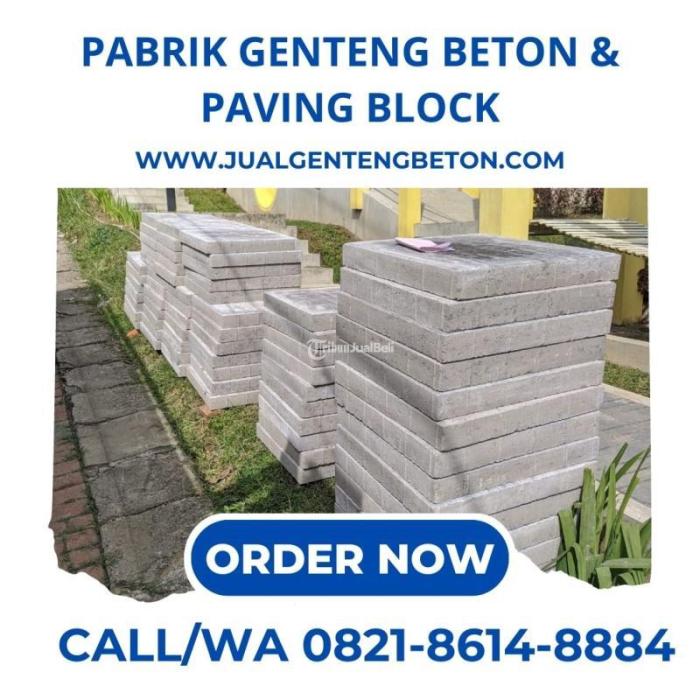
Source: tstatic.net
Creating a stunning and functional hardscape involves more than just choosing attractive materials. Successful hardscape design hinges on understanding and applying key principles that ensure visual harmony and practical usability. These principles guide the arrangement and selection of elements to create an outdoor space that’s both aesthetically pleasing and serves its intended purpose effectively.
Scale, Proportion, and Balance in Hardscape Design
Scale refers to the size of hardscape elements relative to the surrounding environment and the overall space. Proportion deals with the harmonious relationships between the sizes and shapes of different elements within the hardscape. Balance, meanwhile, concerns the visual weight distribution across the design, creating a sense of equilibrium. For example, a massive patio in a small backyard would be out of scale, while a walkway disproportionately narrow compared to a large house would look unbalanced. Achieving a sense of visual equilibrium might involve placing a large element, like a retaining wall, opposite a grouping of smaller features, such as strategically placed planters. Careful consideration of these three factors is crucial for creating a design that feels natural and inviting.
The Role of Color, Texture, and Pattern in Hardscape Design
Color, texture, and pattern significantly influence the visual appeal of a hardscape. Color choices should complement the surrounding landscape and architecture, creating a cohesive and harmonious look. For instance, warm earth tones can create a rustic feel, while cooler grays and blues can evoke a modern aesthetic. Texture adds depth and visual interest; contrasting smooth pavers with rough-hewn stone, for example, can create a dynamic and engaging space. Patterns, achieved through the arrangement of paving stones or the design of a retaining wall, add visual rhythm and structure. A repeating geometric pattern can create a sense of order and formality, while a more organic, free-flowing pattern can create a more relaxed and natural feel.
Integrating Hardscape Elements with the Surrounding Landscape and Architecture
Successful hardscape design seamlessly integrates hardscape features with the existing landscape and architecture. This involves considering the existing vegetation, topography, and building styles to create a cohesive and unified design. For example, a modern, minimalist hardscape might complement a contemporary home with clean lines and sleek materials, while a more traditional hardscape with curving paths and natural stone might suit a historic home or a landscape with mature trees. The hardscape should enhance and complement, not compete with, the surrounding environment. Careful planning and consideration of the existing context are key to achieving a harmonious and visually appealing result. For instance, using materials that echo the colors or textures found in the existing house or landscape can create a strong sense of connection and unity.
Hardscape Installation and Maintenance
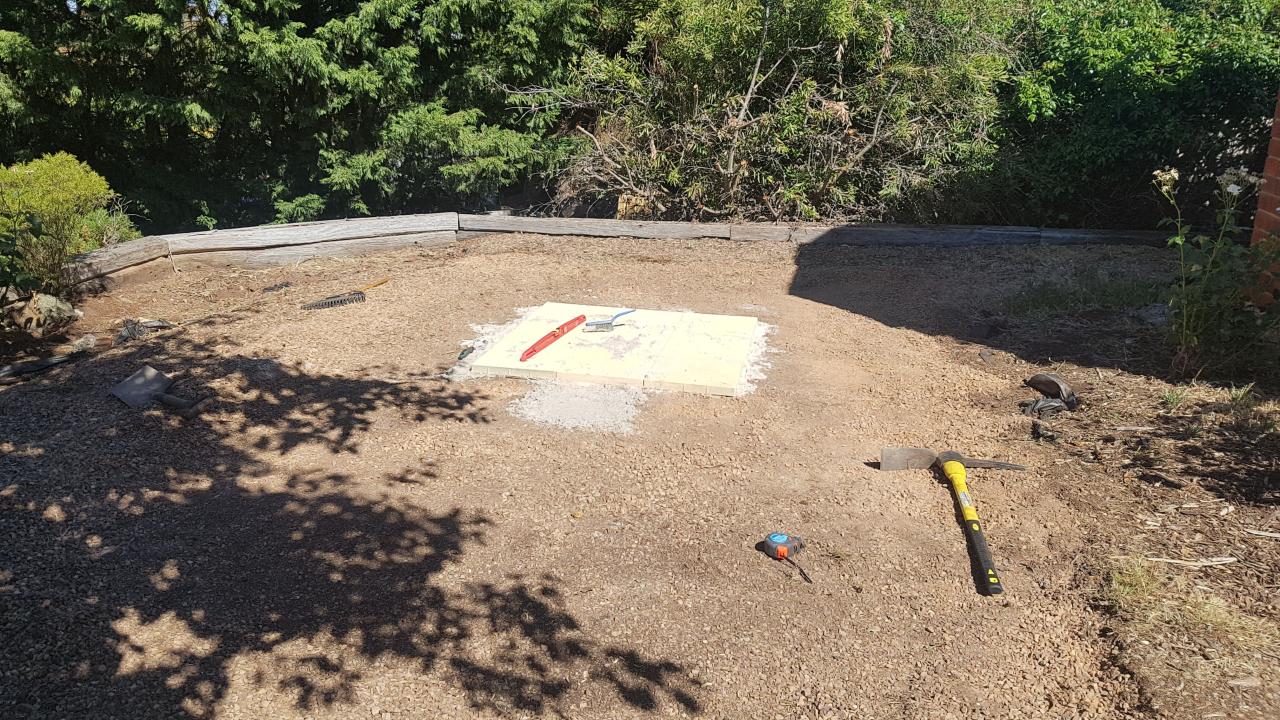
Source: com.au
Creating beautiful and functional outdoor spaces requires careful planning and execution, from design to installation and ongoing maintenance. This section will guide you through the process of installing a simple paver patio and provide essential maintenance tips for various hardscape materials. Proper installation and consistent maintenance are crucial for extending the lifespan of your hardscape features and ensuring their continued aesthetic appeal.
Installing a Simple Paver Patio
Building a patio with pavers is a rewarding DIY project, achievable with some planning and effort. This step-by-step guide provides a basic framework; always refer to manufacturer instructions for your specific pavers and materials.
- Preparation: Begin by defining the patio area and removing existing vegetation and topsoil to a depth of 4-6 inches. Level the base using compacted gravel or a suitable sub-base material. This ensures a stable and even surface for your pavers.
- Edging: Install landscape edging around the perimeter of the patio to contain the pavers and prevent shifting. Choose edging materials that complement your pavers and overall landscape design.
- Base Layer: Add a layer of compacted sand (about 1-2 inches) over the base gravel. This provides a more stable and level surface for the pavers, minimizing settling over time. Use a screed board or a straight edge to ensure a consistent and level sand layer.
- Paver Installation: Begin laying pavers, starting from a corner or a straight edge. Maintain consistent spacing between pavers using spacers if needed. Slightly tap down each paver to ensure even settles into the sand.
- Joint Sanding: Once all pavers are in place, sweep polymeric sand into the joints between the pavers. This sand helps lock the pavers together, prevents weed growth, and provides stability. Follow the manufacturer’s instructions for proper curing and activation of the polymeric sand.
- Final Touches: After the polymeric sand has cured, sweep away any excess sand from the paver surface. You can then add a final layer of polymeric sand if needed to fill any gaps.
Maintaining Hardscape Materials
Regular maintenance is vital for preserving the beauty and functionality of your hardscape. Different materials require specific care.
- Pavers: Regularly sweep or blow away leaves and debris. Pressure washing can remove stubborn stains, but use a low-pressure setting to avoid damaging the pavers. Reseal every few years with a suitable sealant to protect against staining and weathering.
- Concrete: Sweep or wash away dirt and debris. Concrete sealers protect against staining and weathering; reapply as needed. Minor cracks can often be repaired with concrete patching compound.
- Natural Stone: Regular sweeping and occasional washing with a mild detergent solution are generally sufficient. Sealing helps protect against staining and weathering, but the frequency depends on the type of stone and its porosity. Professional cleaning might be needed for heavily soiled or stained stone.
- Brick: Similar to pavers, sweeping and occasional pressure washing (low pressure) are recommended. Sealing helps preserve the color and protect against weathering. Damaged bricks can be individually replaced.
Addressing Hardscape Problems
Early detection and prompt action are crucial in addressing potential issues.
- Settling: Uneven settling can be caused by inadequate base preparation. Minor settling can often be corrected by lifting and resetting the affected pavers or sections. For more significant settling, professional intervention might be required to address the underlying base.
- Cracking: Cracks in concrete or pavers can be caused by frost heave, poor base preparation, or settling. Small cracks can be repaired with patching compounds. Larger cracks may require more extensive repairs or replacement.
- Weed Growth: Weeds can sprout between pavers or in cracks. Regular weeding is essential. Using polymeric sand during installation significantly reduces weed growth. Herbicides can be used cautiously, ensuring they are compatible with your hardscape materials.
Sustainable Hardscape Practices
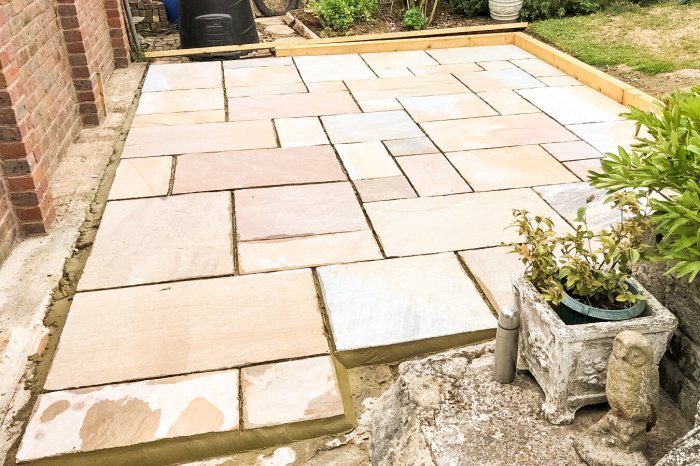
Source: Squarespace-cdn.com
Creating beautiful and functional outdoor spaces doesn’t have to come at the expense of the environment. Sustainable hardscape design considers the long-term environmental impact of materials and construction methods, aiming to minimize negative effects while maximizing the aesthetic appeal and functionality of the landscape. This involves thoughtful material selection, efficient water management, and a focus on minimizing waste.
Choosing sustainable hardscape materials significantly reduces the environmental footprint of your project. Different materials have vastly different impacts; for example, concrete production is a significant contributor to greenhouse gas emissions due to the energy required for manufacturing and transportation. Conversely, using recycled materials like reclaimed brick or permeable paving stones reduces the demand for new resources and minimizes waste. The embodied energy – the total energy used throughout a material’s lifecycle – is a key factor to consider. Lower embodied energy materials contribute to a smaller carbon footprint.
Environmental Impact of Hardscape Materials and Construction Methods
The environmental impact of hardscape materials and construction methods is multifaceted. It encompasses the extraction and processing of raw materials, manufacturing processes, transportation, installation, and eventual disposal or recycling. Concrete, while widely used, has a significant carbon footprint due to cement production’s high energy demands and associated CO2 emissions. Asphalt, another common material, also contributes to greenhouse gas emissions during its production and requires significant energy for heating and mixing. In contrast, materials like natural stone, while often requiring transportation over long distances, may have a lower overall carbon footprint depending on the source and type of stone. The use of recycled materials significantly reduces the environmental impact by diverting waste from landfills and reducing the need for virgin resources. Construction methods also impact the environment; minimizing site disturbance, using efficient equipment, and managing waste effectively all contribute to a more sustainable approach.
Sustainable Hardscape Design Plan
A sustainable hardscape plan integrates ecological considerations throughout the design process. This starts with site analysis, understanding the existing topography, soil conditions, and water flow patterns. This information guides decisions about material selection, drainage systems, and plant choices. For example, utilizing permeable paving materials allows rainwater to infiltrate the ground, replenishing groundwater supplies and reducing runoff. Choosing drought-tolerant plants minimizes the need for irrigation, conserving water resources. Incorporating native plants further supports local ecosystems and reduces the need for fertilizers and pesticides. Minimizing impervious surfaces, such as concrete patios, reduces runoff and its associated pollutants. A well-designed sustainable hardscape plan balances aesthetic appeal with environmental responsibility. For example, a patio made from reclaimed wood, surrounded by drought-tolerant native plants, provides a beautiful and environmentally friendly outdoor space.
Permeable Paving and Water Management Techniques
Permeable paving systems, such as porous concrete pavers or gravel grids, allow rainwater to seep into the ground, reducing runoff and mitigating the urban heat island effect. These systems help replenish groundwater, reduce stormwater management costs, and improve water quality. Other water management techniques include rain gardens, bioswales, and dry creek beds, which capture and filter rainwater, reducing its impact on the surrounding environment. These features not only manage water effectively but also enhance the aesthetic appeal of the hardscape. Proper grading and drainage design are crucial for directing water flow away from structures and towards these water management features, ensuring effective water control and minimizing erosion. A well-integrated system can significantly reduce the environmental impact of hardscape design. For example, a parking lot constructed with permeable pavers and surrounded by a bioswale significantly reduces runoff and improves water quality compared to a traditional asphalt parking lot.
Illustrative Examples of Exterior Hardscapes

Source: co.nz
Let’s explore three distinct hardscape designs to illustrate the versatility and beauty achievable with careful planning and material selection. These examples highlight different styles and demonstrate how hardscaping can transform outdoor spaces.
Mediterranean Courtyard
This design evokes the sun-drenched charm of a Mediterranean villa. Imagine a rectangular courtyard paved with warm-toned terracotta tiles, their slightly uneven surfaces adding rustic character. A low, dry-stacked stone wall, built from light beige limestone, partially encloses the space, creating intimate seating areas. Ornamental olive trees in large terracotta pots punctuate the space, their silvery leaves contrasting beautifully with the warm tones of the paving and stone. A central fountain, crafted from aged stone, gently trickles water into a shallow basin, providing a soothing auditory element. The overall aesthetic is relaxed, inviting, and naturally elegant. At night, strategically placed low-voltage pathway lights, subtly illuminating the stone walls and highlighting the fountain’s contours, create a magical ambiance. Uplighting the olive trees casts their silhouettes dramatically against the night sky.
Modern Minimalist Patio
In stark contrast to the Mediterranean courtyard, this design embraces clean lines and minimalist aesthetics. Large, square slabs of dark grey concrete form the patio’s foundation, their smooth surfaces reflecting the ambient light. A linear fire pit, constructed from corten steel, provides a focal point, its rust-colored patina adding a touch of warmth to the otherwise cool palette. Sleek, geometric planters made of powder-coated aluminum hold carefully chosen succulents and grasses, adding textural interest without overwhelming the space. The overall feeling is one of sophisticated simplicity and modern elegance. At night, integrated LED strip lighting within the fire pit’s base creates a soft, ambient glow, while spotlights subtly highlight the architectural lines of the planters and the surrounding walls.
Rustic Farmhouse Patio
This design captures the charm of a rural farmhouse setting. A large patio area is constructed from reclaimed brick, its varied tones and textures adding character and warmth. Wide, weathered wooden planks form a border around the patio, creating a natural frame. A pergola, constructed from rough-hewn timber, provides shade and a place for climbing vines to flourish. Rustic wooden furniture, including a large farmhouse table and chairs, completes the scene. Potted herbs and wildflowers add pops of color and fragrance. The overall ambiance is one of cozy comfort and rustic charm. At night, string lights draped across the pergola cast a warm, inviting glow, creating a magical, intimate atmosphere. Subtle pathway lighting guides the way through the space, illuminating the texture of the brick and the wooden elements.
Sensory Experience of a Rustic Farmhouse Patio
Imagine stepping onto the cool, slightly uneven surface of the reclaimed brick patio. The scent of herbs and wildflowers fills the air, mingling with the earthy aroma of the wood and soil. The sound of crickets chirping in the distance blends with the gentle creak of the wooden pergola. The warm glow of the string lights cast dancing shadows, creating a cozy, intimate atmosphere. The feel of the rough-hewn wood beneath your hand adds to the rustic charm, while the soft light invites you to relax and enjoy the tranquil surroundings. The overall sensory experience is one of calm, rustic beauty, evoking feelings of peace and contentment.
Outcome Summary
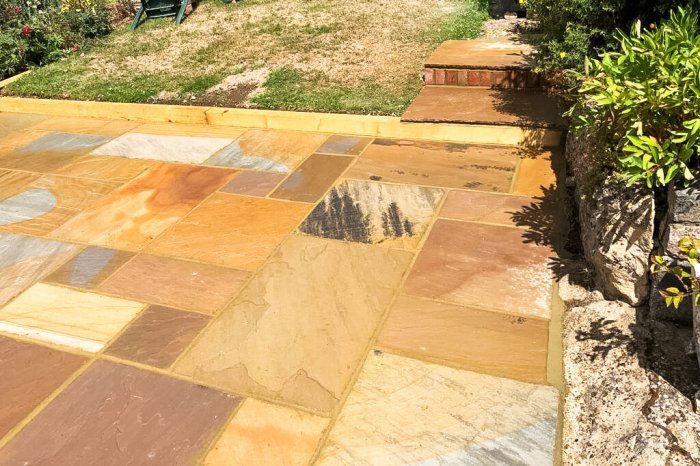
Source: sSquarespacecdn.com
Creating a stunning and functional exterior hardscape is a rewarding process that significantly enhances the beauty and usability of your outdoor spaces. By carefully considering material selection, design principles, and sustainable practices, you can transform your yard into a true extension of your home, a place for relaxation, entertainment, and lasting memories. Remember, planning is key – consider your budget, climate, and personal style to create a hardscape that reflects your unique vision and enhances your property’s value for years to come. Happy hardscaping!
